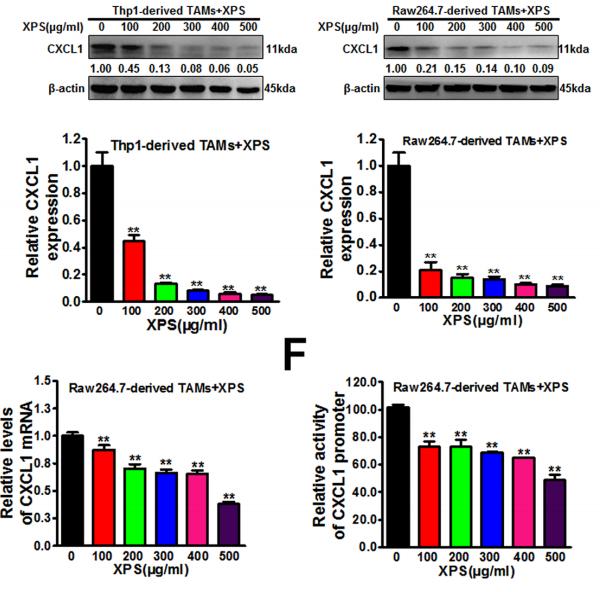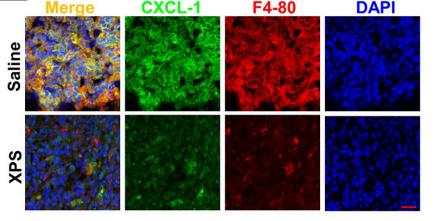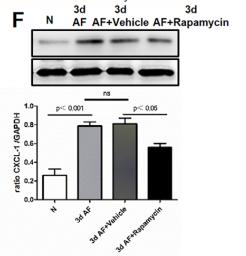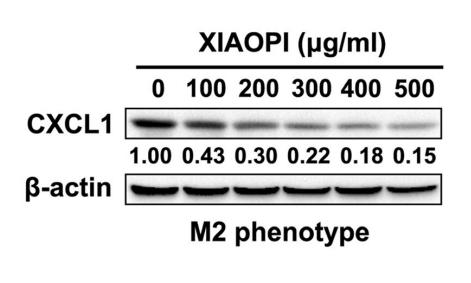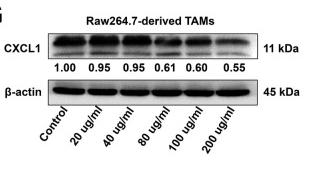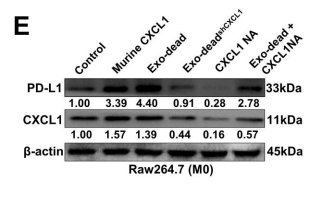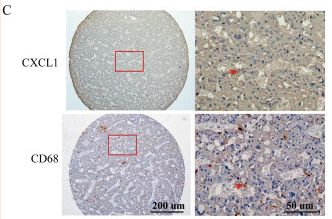产品描述
*The optimal dilutions should be determined by the end user.
*Tips:
WB: 适用于变性蛋白样本的免疫印迹检测. IHC: 适用于组织样本的石蜡(IHC-p)或冰冻(IHC-f)切片样本的免疫组化/荧光检测. IF/ICC: 适用于细胞样本的荧光检测. ELISA(peptide): 适用于抗原肽的ELISA检测.
引用格式: Affinity Biosciences Cat# AF5403, RRID:AB_2837887.
展开/折叠
C-X-C motif chemokine 1; Chemokine (C-X-C motif) ligand 1 (melanoma growth stimulating activity, alpha); chemokine (C-X-C motif) ligand 1; CINC-1; CXCL1; Cytokine-induced neutrophil chemoattractant 1; Fibroblast secretory protein; Fsp; Gro 1; Gro A; Gro; GRO protein, alpha; GRO-alpha(1-73); GRO-alpha(6-73); Gro1; GRO1 oncogene (melanoma growth stimulating activity, alpha); GRO1 oncogene (melanoma growth-stimulating activity); Gro1 oncogene; GROa; GROA_HUMAN; Growth-regulated alpha protein; KC; KC chemokine, mouse, homolog of; melanoma growth stimulatory activity alpha; Melanoma growth stimulatory activity; Melanoma growth stimulatory activity, alpha; MGSA alpha; MGSA; MGSA-a; N51; NAP-3; NAP3; Neutrophil-activating protein 3; Platelet-derived growth factor-inducible protein KC; Scyb 1; Scyb1; Secretory protein N51; Small inducible cytokine subfamily B, member 1;
抗原和靶标
- P09341 GROA_HUMAN:
- Protein BLAST With
- NCBI/
- ExPASy/
- Uniprot
MARAALSAAPSNPRLLRVALLLLLLVAAGRRAAGASVATELRCQCLQTLQGIHPKNIQSVNVKSPGPHCAQTEVIATLKNGRKACLNPASPIVKKIIEKMLNSDKSN
研究背景
Has chemotactic activity for neutrophils. May play a role in inflammation and exerts its effects on endothelial cells in an autocrine fashion. In vitro, the processed forms GRO-alpha(4-73), GRO-alpha(5-73) and GRO-alpha(6-73) show a 30-fold higher chemotactic activity.
N-terminal processed forms GRO-alpha(4-73), GRO-alpha(5-73) and GRO-alpha(6-73) are produced by proteolytic cleavage after secretion from peripheral blood monocytes.
Secreted.
Belongs to the intercrine alpha (chemokine CxC) family.
研究领域
· Environmental Information Processing > Signaling molecules and interaction > Cytokine-cytokine receptor interaction. (View pathway)
· Environmental Information Processing > Signal transduction > TNF signaling pathway. (View pathway)
· Human Diseases > Infectious diseases: Bacterial > Epithelial cell signaling in Helicobacter pylori infection.
· Human Diseases > Infectious diseases: Bacterial > Salmonella infection.
· Human Diseases > Infectious diseases: Bacterial > Legionellosis.
· Human Diseases > Infectious diseases: Parasitic > Amoebiasis.
· Human Diseases > Immune diseases > Rheumatoid arthritis.
· Organismal Systems > Immune system > Chemokine signaling pathway. (View pathway)
· Organismal Systems > Immune system > NOD-like receptor signaling pathway. (View pathway)
· Organismal Systems > Immune system > IL-17 signaling pathway. (View pathway)
文献引用
Application: IF/ICC Species: Mouse Sample: Raw264.7 cells
Application: WB Species: Mice Sample: breast tumor tissues
Application: IF/ICC Species: Mice Sample: breast tumor tissues
Application: WB Species: mouse Sample: M2 phenotype RAW264.7 cells
Application: IF/ICC Species: Mouse Sample: breast cancer cells
Application: IHC Species: Human Sample:
Application: IHC Species: mouse Sample: lung
Application: WB Species: human and mouse Sample: TAMs
Application: IF/ICC Species: mouse Sample: macrophages
Application: WB Species: mouse Sample: corneas
限制条款
产品的规格、报价、验证数据请以官网为准,官网链接:www.affbiotech.com | www.affbiotech.cn(简体中文)| www.affbiotech.jp(日本語)产品的数据信息为Affinity所有,未经授权不得收集Affinity官网数据或资料用于商业用途,对抄袭产品数据的行为我们将保留诉诸法律的权利。
产品相关数据会因产品批次、产品检测情况随时调整,如您已订购该产品,请以订购时随货说明书为准,否则请以官网内容为准,官网内容有改动时恕不另行通知。
Affinity保证所销售产品均经过严格质量检测。如您购买的商品在规定时间内出现问题需要售后时,请您在Affinity官方渠道提交售后申请。产品仅供科学研究使用。不用于诊断和治疗。
产品未经授权不得转售。
Affinity Biosciences将不会对在使用我们的产品时可能发生的专利侵权或其他侵权行为负责。Affinity Biosciences, Affinity Biosciences标志和所有其他商标所有权归Affinity Biosciences LTD.




